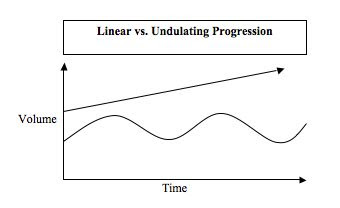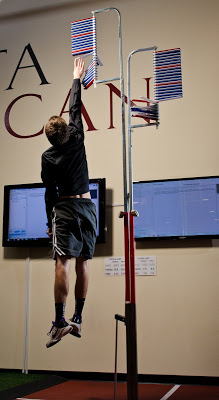
One of my mentors runs his college team under a unique form of government, a meritocracy. Jack Clark is the Head Coach of the University of California’s Rugby team, amassing 22 National Championships and recently credited for reinstating his team and others after Cal felt forced to cut these programs due to funding.
In its most basic definition, a meritocracy is a system in which the talented are chosen and moved ahead on the basis of their achievement. Coach Clark brings up this term on the first day, explaining that the best players will play based on their abilities and their character. This term, meritocracy, can and should be applied to your training. So the question is not whether you should be using a merit based program, but what are the best qualities that determine this merit?

As we discussed before, the organization of your workouts, including the progression of weights, reps, and/or distances is called periodization. While there are many different possibilities for periodization schemes, they are all derivatives of 2 types; linear or non-linear (undulating) plans.
A June 2012 study out of Eastern Tennessee University’s Kinesiology Department compared these 2 different periodization types with Division I track & field athletes. The authors found that a linear training model is more efficient than a non-linear model in producing strength gains. These conclusions were based on the results that the linear group had superior volumes of work, as well as the amount of improvement per volume load. Remember that this volume (weight x repetitions) is the true goal of any program, and judgement of training improvement for an athlete.

We apply a meritocracy to this linear model of periodization. Athletes’ performances are measured every week for each exercise; weight lifted, number of pull-ups performed, distance jumped, etc. Then this value is added onto each week in a linear fashion. For example, an athlete performing a 100 kilo squat adds on 5 kilos so the next week’s workout is a squat at 105 kilos for the same number of repetitions. This progression continues for 3 weeks. Being in the Silicon Valley, where half the population is software engineers has allowed us to build our software to manage and track all of this information.
After 3 weeks, our coaches have an objective decision of whether to promote the athlete based off the their performance. By performance or merit, we really mean their relative strength, how strong they are for their body weight. Depending on their force plate scans, athletes have target weights for their prescribed movement. This target is based off their percent body weight, rather than the more traditional method of 1 RM, repetition maximum (see Sparta Point).
This Meritocracy has been a welcome answer to the reality of our modern culture, where seasons last at least 6 months, so every week of the off-season must really be an athlete’s best week. Also when you do not have the communism regime to control all variables, or the massive population to allow a higher margin for error, the effectiveness of a programmed off-season must be highly questioned.
In this world of drug testing and brief off-seasons to build strength, there is only one government to oversee your training.
Painter KB, Haff GG, Ramsey MW, McBride J, Triplett T, Sands WA, Lamont HS, Stone ME, Stone MH. Strength gains: block versus daily undulating periodization weight training among track and field athletes. Int J Sports Physiol Perform. 2012 Jun;7(2):161-9.